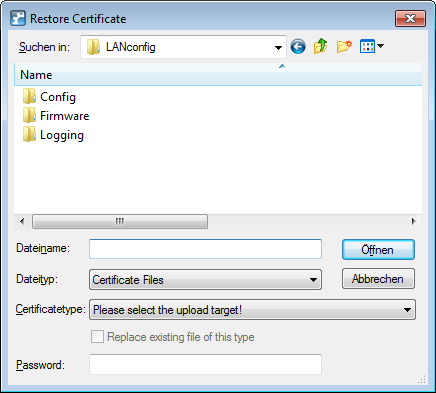In LANconfig, the CPE WAN Management Protocol is configured under .
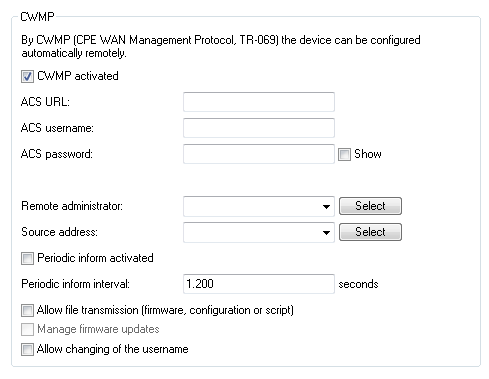
- CWMP activated
- Enables or disables CWMP.
- ACS URL
- Here you enter the address of the ACS (auto configuration server) which the CPE (customer premises equipment) connects to. The address is entered in the IPv4, IPv6, or FQDN format. HTTP and HTTPS are permitted, although the use of HTTPS is preferred. Otherwise the devices transmit device-specific parameters, such as passwords or access data, unencrypted. Before you can use HTTPS, the trusted root certificate for verifying the server identity needs to be uploaded to the device.
- ACS username
- Enter a user name for the device to use when connecting with the ACS (auto configuration server).
- ACS password
- Enter a password for the device to use when connecting with the ACS (auto configuration server).
- Remote administrator
- Select one of the configured device administrators to be used by the ACS (auto configuration server) when connecting to this device. The name you select must be an enabled device administrator with appropriate privileges, i.e. root access to change the firmware.
- Source address
- This is where you can configure an optional sender address to be used instead of the one otherwise automatically selected for the destination address. If you have configured loopback addresses, you can specify them here as source address.
Note: If the source address set here is a loopback address, then the device will use this unmasked even for remote stations that are masked.The device accepts addresses in various input formats:
- Name of the IP network (ARF network), whose address should be used.
- "INT" for the address of the first intranet.
- "DMZ" for the address of the first DMZ (caution: If there is an interface called "DMZ", then the device takes its address).
- LB0 ... LBF for one of the 16 loopback addresses or its name
- Any IP address in the form x.x.x.x.
- Periodic inform activated
- Enables or disables the sending of periodic inform messages from the device to the ACS (auto configuration server).
- Periodic inform interval
- This is the interval in seconds between two periodic inform messages sent by the device to the ACS (auto configuration server). The ACS then requests further information from the device. The default value is 1200 seconds (20 minutes). Do not set a value that is too small, as inform messages increase network load. The interval does not commence before the device and server have exchanged all of the necessary information.
- Allow file transmission
- This switch allows you to transfer a firmware or a script file from the ACS (auto configuration server) to this device.
- Manage firmware updates
- This switch allows the ACS (auto configuration server) to make firmware modifications to the device.
- Allow changing of the username
- This switch allows the ACS (auto configuration server) to change the device administrator or to change the name and password of the device administrator used to connect to the device.
In the default setting, the connection request URL uses HTTP port 80. You configure this in LANconfig under in the section Management protocols under Ports.
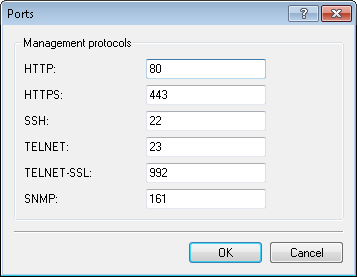
In order for an ACS to request the device to connect, it must be possible to access the corresponding HTTP port via the WAN or VPN. This requires that access either via WAN or VPN is allowed in LANconfig under in the section Configuration access ways under .
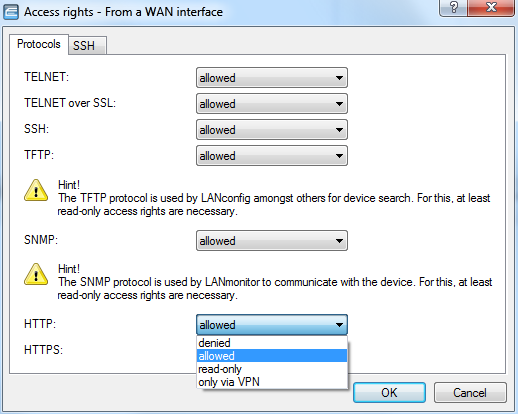
If you use IPv6, you additionally need to set the IPv6 firewall to allow access to the corresponding port under .
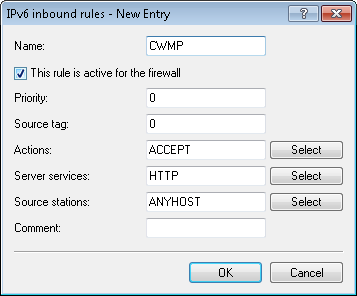
Note: The connection request is only possible with authentication by means of user name and password.
If HTTPS is used in the ACS URL, the CPE validates the ACS certificate. To this end, you first have to save the CWMP root CA certificate on the CPE. If the CPE is unable to validate the server certificate against the existing root CA certificate, it rejects the connection. The certificate is uploaded either by LANconfig or WEBconfig. In LANconfig you do this as follows:
- In the device view section, right-click on the corresponding device and, under Configuration management, select the item Upload certificate or file.
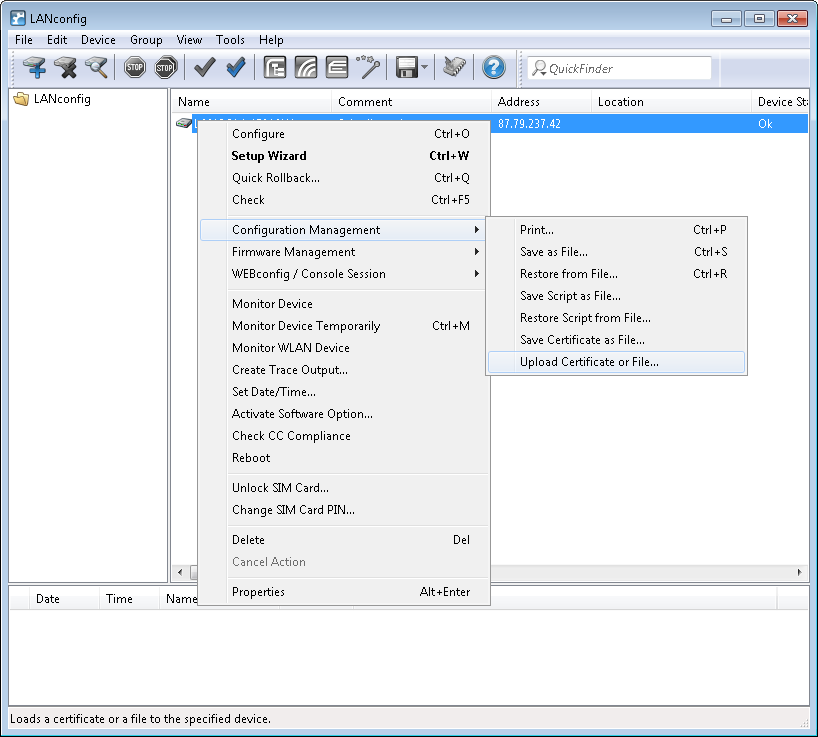
- In the dialog that follows, set the certificate type to "CWMP root CA certificate" and click Open.
When using SSL/TLS for authentication at the CPE, you upload the client certificate and the private key by means of PKCS#12 file (CWMP container as PKCS#12 file) onto the CPE.
